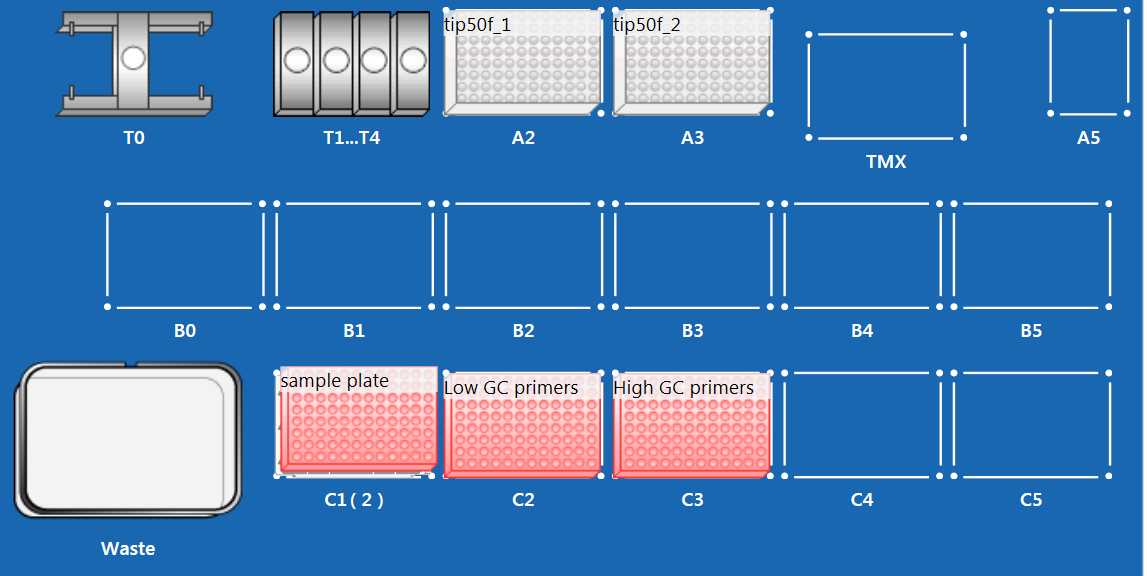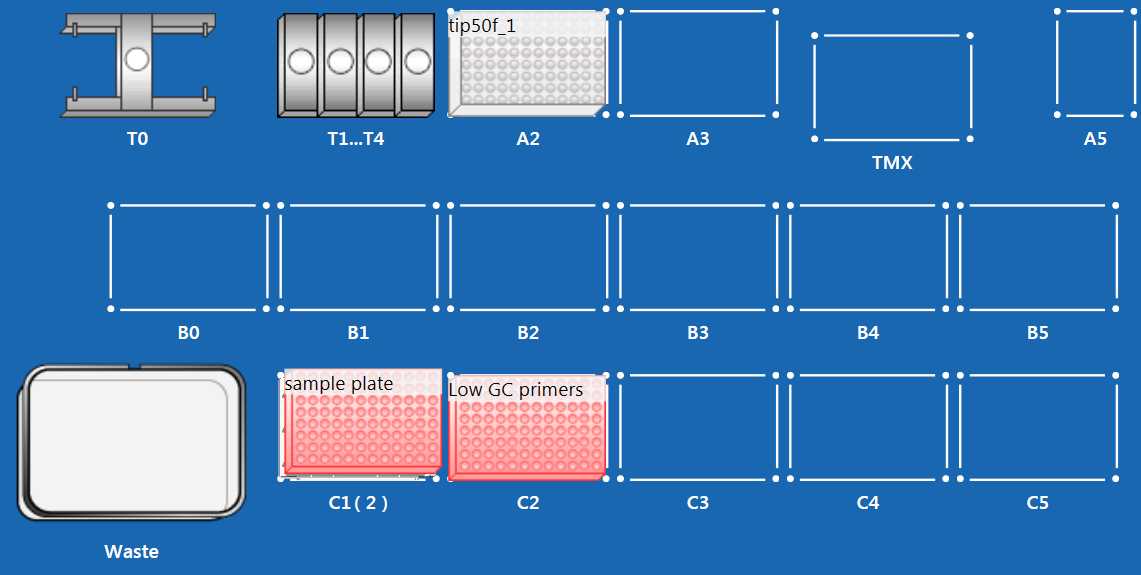Twist 96-Plex (Riptide) Library Prep
Oksana Polesskaya, Abraham Palmer, Khai-Minh H Nguyen, Katarina A Cohen
Abstract
This protocol is designed for Twist 96-PLex Library Prep. We use the EPmotion 5075 to add sample barcodes (can also easily be done manually with a multichannel pipette). This is a continuation of the "EPMotion - Normalization and Randomization" protocol.
Steps
Adding Primer A with EPmotion
Review the Twist 96-Plex Protocol
Note: Protocol was created for Document Version (DOC-001284 REV 2.0)
Fill ice pan with ice chips.
Defrost 4uL randomized/normalized sample plate from the "EPMotion - Normalization and Randomization" protocol On ice
Open epBlue application
Download and import 50% GC Content Adapters.export7 and Low GC Content Adapters.export7
- Depending on the GC content of the species you are working with, choose the protocol accordingly.
- Use 50% GC Content Adapters if samples have GC content between 40% - 60%
- Use Low GC Primers if samples have GC content below 40%
- Use High GC Primers if samples have GC content above 60%
Library Prep
Follow the Twist 96-Plex Protocol
Note: Protocol was created for Document Version (DOC-001284 REV 2.0)
- IMPORTANT: Size selection Bead Volumes used: 50ul:20ul (Option 3) worked best for us.
- Make sure to record which pool barcode index for each library
- PRO TIP: We try to match the last digit of the library number (Ex. Riptide 53) with the pool barcode index used.
- In the case of Riptide 5 3. We would use the pool barcode #3 for this particular library.
QC
Perform on each library and record keep all QC for pooling steps
- Nanodrop
- Qubit (HS Assay)
- Tapestation (D1000)
Libraries should have an average fragment size between 420bp - 650bp.* 260/280 should be around 1.80 - 2
- 260/230 should be around 2-2.2.
- We have been able to get good data from libraries with relatively poor nanodrop purities .
- Qubit concentrations can widely range. We get a range from 10ng/ul - 60ng/ul



